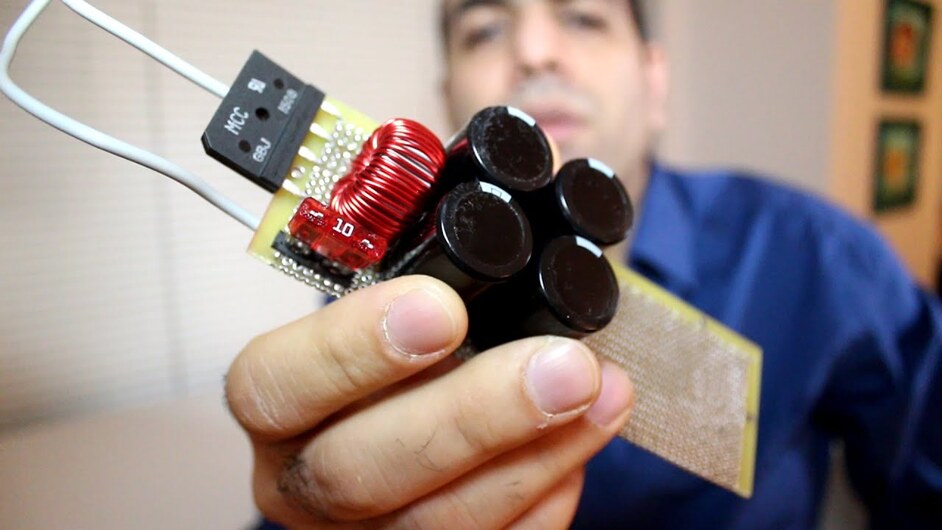I’ll stck with Respiratory Therapy. Have you tried albuterol? It fixes everything in the hospital just ask the nurses I work with.
Ours say it is Vitamin H. May not solve the patient’s problem but they no longer care and the nurses are happy.
That simple circuit is not representative of a modern SMPS which must pass international standards and work at any mains voltage and frequency.
To pass RFI conducted emission standards it will have an LC filter (probably two stages) at the input to stop the switching noise and any other noise from the rest of the machine getting onto the line. In equal measure that will stop conducted RFI getting into the machine.
To pass mains harmonic standards it will need to have PFC (power factor correction). To work at any mains voltage without a selector it will be active PFC. That is a boost converter in between the bridge rectifier and the reservoir capacitor. It steps up the instantaneous mains full wave rectified mains voltage up to about 340V DC. It is controlled in such a way that the current it draws from the mains is always proportional to the instantaneous line voltage. In that way it makes the input look purely resistive, has unity power factor and doesn’t generate harmonics on the line. In equal measure it doesn’t care about the mains frequency or line harmonics. It has to work at both 50Hz and 60Hz which is a much bigger variation that you will see on your 60Hz supply.
So the control loop of the down convertor just sees 340V DC, it isn’t affected by line noise and harmonics. Not only by design but these things are also tested by EMC test houses to the various standards.
I spent a career building machines with SMPSs and stepper motors. I specified the SMPSs and liaised with the design engineers, saw them through safety and EMC approvals for CE, UL and CSA. In hundreds of thousands of machine we didn’t see them making digital errors or missing stepper motor steps. They either work correctly or reset if the mains is too flaky.
Well they’re simplified block diagrams for a reason, but I digress… 
So here’s your typical PFC:

The essentials of a PFC and the simplified I indicated are not very much different, unless you really really want to get into the actual electrical proprietary design of each block.
While I respect your paraphrased career assembling 3D printers using stock off-the-shelf power supplies and project management, it’s not a ringing endorsement (I pun!) for creating a high voltage power supply (ie.- thousands of volts needed to drive a laser tube) where much of the crucial theory of high voltage harmonics is important.
I re-read what I wrote and realized I made a crucial mistake in summarizing “…= lower output.”.
Did anyone catch that it should have been = higher current? 
FOOL BRIDGE RECTIFIER! tee hee… 
i love all of his videos so much.
I didn’t have a career making 3D printers. That was my own business for three years after spending 30 years working for a company that makes gaming machines. Part of that time I was R&D manager and commissioned custom SMPS to my specification and was responsible for getting machines through safety and EMC approvals. I was familiar with the full schematics and discussed them with the design engineers.
Again that diagram doesn’t match a typical multi-output SMPS with PFC. That just looks like just the PFC stage or a single output supply where it can be combined.
After the smoothing you have one or more down converters with their own control loops. For a laser you also have an up convertor which could share the PFC or have its own. Since we were taking about stepper motors losing steps that is irrelevant. With a correctly designed PSU mains RFI and mains harmonic distortion does not effect the output. If it did most digital appliances would be totally unreliable because typical mains in a large building has plenty of noise and harmonic distortion.
Alright, well, at this point (actually, it was long before this) I’m going to have to agree to disagree.
Sad thing is, @Tom_A, I’m thinking you just had a really crappy run of luck as far as your two production units go. What you’re seeing obviously isn’t what everyone else is seeing, and as frustrating (not a strong enough word, I know) as that is, I’m sure they will make it right. If support gives you any insight into what’s going on in your machine please share, because, with my normal luck with these things, I’ll probably be following your example 
I was just thinking about this in statistical terms, and it should be a birthday-problem kind of calculation to figure out what the odds are that someone out of GF’s customer base will run into a string of bad machines. If it’s 1 in 1000 it would happen fairly often.
Yeah… I know. I figured I’d do something I want to do so I went to run off a job last night but ran into a completely unrelated issue. Nobody’s fault on that one. So I’ll try and run it again tonight.
Man, I feel for you. Nothing sucks more than going from super excited and pumped to sub-surface gloom and doom. But, as the most anoying song in the world says, “The sun will come out tomorrow…” (just be glad you can’t hear me singing it 

Or better…

We ran the numbers to see if repeat-delivery-problems were a statistical anomaly (or if, for example, some people have rough UPS handlers). What we found was that unfortunately, given a fully random distribution of errors, at the volumes we’re now shipping at, it’s more likely than not that some unlucky folks have multiple problems. Right now our models predict folks who have two consecutive broken units… pretty soon we’ll see the first person suffering three. 
Ouch that must make you very nervous for International Deliveries, the cost burden of multiple failures to OS units would be prohibitive, i am sure the USA only errors must be painful and expensive.
Okay… Fine… I’ll open a ticket tomorrow. I just don’t want to waste support’s time for a third time until I’m 100% convinced there’s a problem. But okay… I guess there is enough evidence to bring support in on it. Tomorrow for sure. I promise.
Are the UPS handling issues excluded from being considered “broken”? I know of one person that has had 3 returns but I think the issues were more related to Shipping/Handling.
Our analysis was looking at returns for any reason, since it’s not always possible to differentiate between handling problems and factory problems (although we try).
“As you can clearly see, I have no regard for safety.”
That was the most cringe-inducing video I’ve seen in a while.
It might be worth putting insurance on shipping the second one if the first one arrives damaged.
